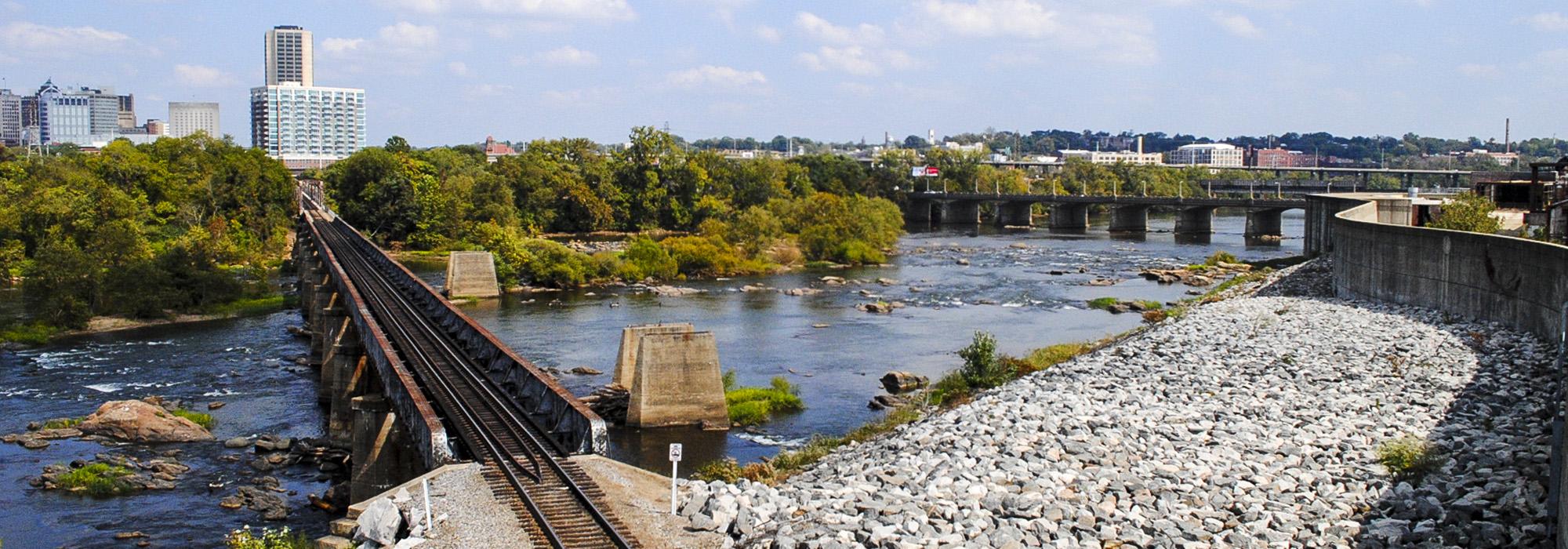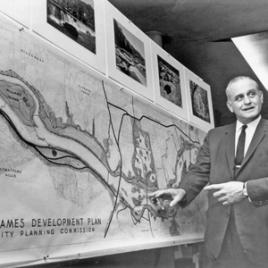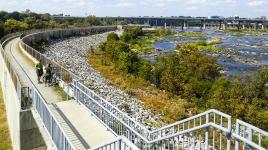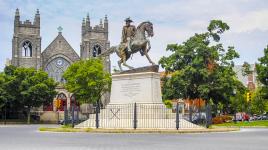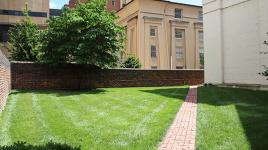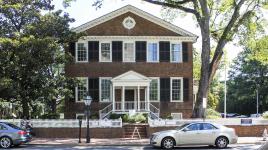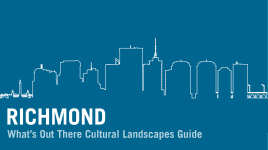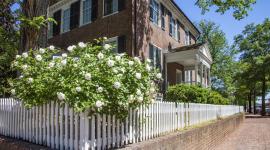Pioneer Information
Born in Holyoke, Massachusetts, Higgins studied horticulture and landscape architecture under the guidance of Frank Waugh at the University of Massachusetts, Amherst, graduating with a B.S. in 1937 and a B.L.A. in 1938. He served in the U.S. Army Air Force from 1942 to 1946, marrying Mary Douthat Smith while stationed in Virginia. From 1946 to 1948 Higgins worked for Charles Gillette on projects including the University of Richmond campus, originally designed by Warren Manning. He worked in the Public Housing Administration’s Richmond field office from 1948 to 1951, and in 1952 established his own practice. In 1957 Higgins consulted for Grace Episcopal Church in Kilmarnock, Virginia, recommending that their new church structure be oriented parallel to the street and that a memorial garden be constructed.
Higgins’ designs are characterized by low-maintenance plantings and sensitivity to historic resources. Two projects in Richmond were connected to his wife’s ancestor, John Marshall: Higgins rehabilitated the grounds of the John Marshall House, built in 1790, and the Monumental Church, built in 1814 with funds raised by Marshall. He participated in such planning projects as the James River Park System, and as an activist he often advised on changes to Richmond’s historic urban landscapes. Higgins taught at the Richmond Professional Institute and was active in several organizations, including the Association for the Preservation of Virginia Antiquities, the Monument Avenue Commission, and the Potomac Chapter of the American Society of Landscape Architects, which honored him with its first annual President’s Award in 1968. He also received the Richmond Urban Design Award in 1970 and honors from the American Institute of Architects-Virginia in 1989. After Higgins died in 1995 his son Ralph continued the practice. The family established a fellowship in landscape architecture in Higgins’ name at the University of Virginia in 1995.



